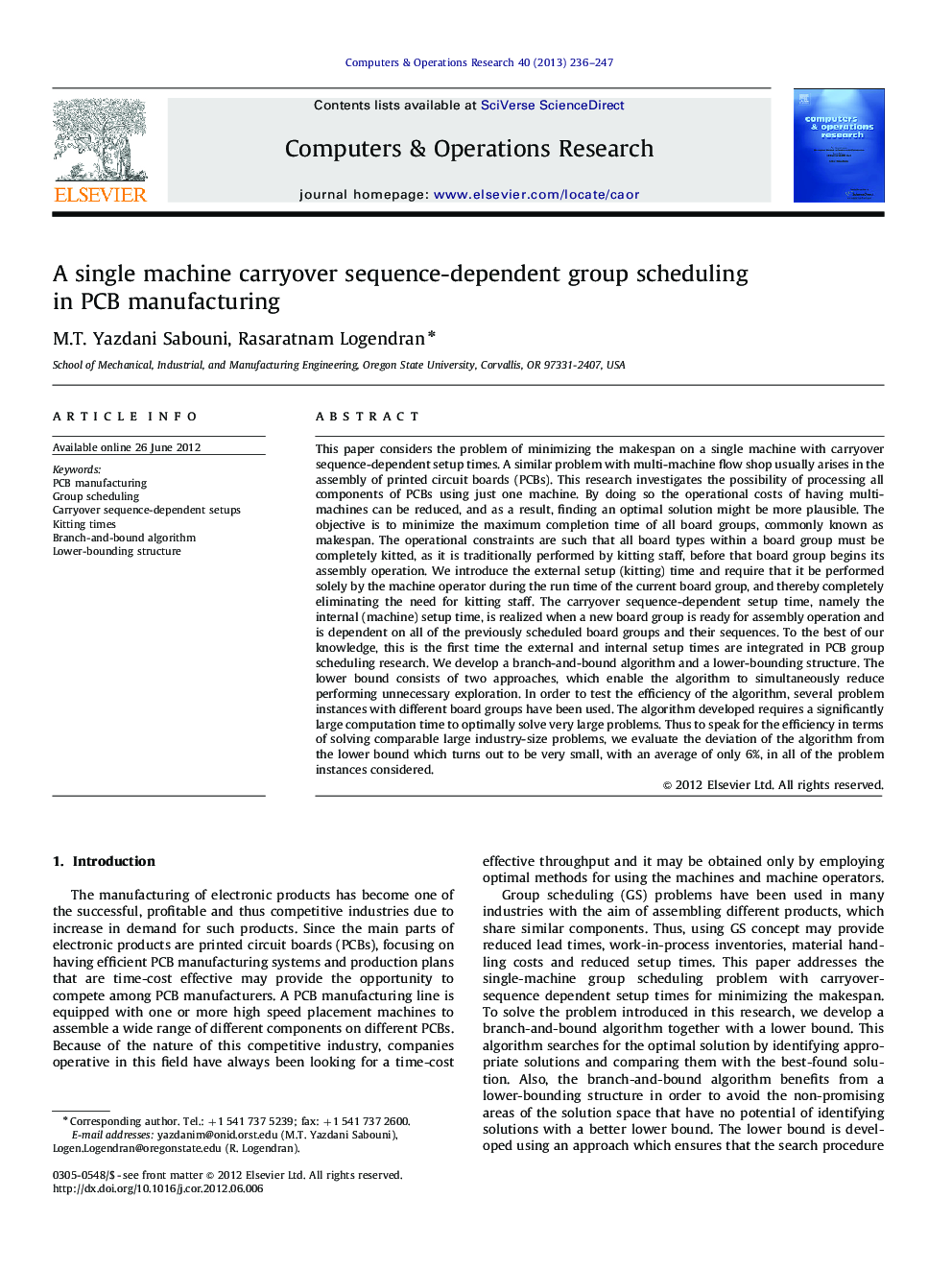| کد مقاله | کد نشریه | سال انتشار | مقاله انگلیسی | نسخه تمام متن |
|---|---|---|---|---|
| 10347506 | 699240 | 2013 | 12 صفحه PDF | دانلود رایگان |
عنوان انگلیسی مقاله ISI
A single machine carryover sequence-dependent group scheduling in PCB manufacturing
دانلود مقاله + سفارش ترجمه
دانلود مقاله ISI انگلیسی
رایگان برای ایرانیان
کلمات کلیدی
موضوعات مرتبط
مهندسی و علوم پایه
مهندسی کامپیوتر
علوم کامپیوتر (عمومی)
پیش نمایش صفحه اول مقاله

چکیده انگلیسی
This paper considers the problem of minimizing the makespan on a single machine with carryover sequence-dependent setup times. A similar problem with multi-machine flow shop usually arises in the assembly of printed circuit boards (PCBs). This research investigates the possibility of processing all components of PCBs using just one machine. By doing so the operational costs of having multi-machines can be reduced, and as a result, finding an optimal solution might be more plausible. The objective is to minimize the maximum completion time of all board groups, commonly known as makespan. The operational constraints are such that all board types within a board group must be completely kitted, as it is traditionally performed by kitting staff, before that board group begins its assembly operation. We introduce the external setup (kitting) time and require that it be performed solely by the machine operator during the run time of the current board group, and thereby completely eliminating the need for kitting staff. The carryover sequence-dependent setup time, namely the internal (machine) setup time, is realized when a new board group is ready for assembly operation and is dependent on all of the previously scheduled board groups and their sequences. To the best of our knowledge, this is the first time the external and internal setup times are integrated in PCB group scheduling research. We develop a branch-and-bound algorithm and a lower-bounding structure. The lower bound consists of two approaches, which enable the algorithm to simultaneously reduce performing unnecessary exploration. In order to test the efficiency of the algorithm, several problem instances with different board groups have been used. The algorithm developed requires a significantly large computation time to optimally solve very large problems. Thus to speak for the efficiency in terms of solving comparable large industry-size problems, we evaluate the deviation of the algorithm from the lower bound which turns out to be very small, with an average of only 6%, in all of the problem instances considered.
ناشر
Database: Elsevier - ScienceDirect (ساینس دایرکت)
Journal: Computers & Operations Research - Volume 40, Issue 1, January 2013, Pages 236-247
Journal: Computers & Operations Research - Volume 40, Issue 1, January 2013, Pages 236-247
نویسندگان
M.T. Yazdani Sabouni, Rasaratnam Logendran,